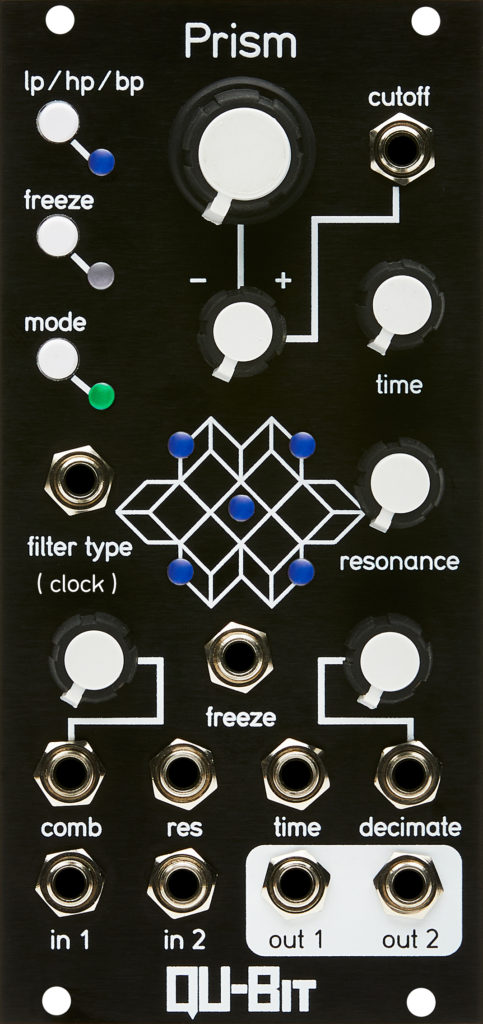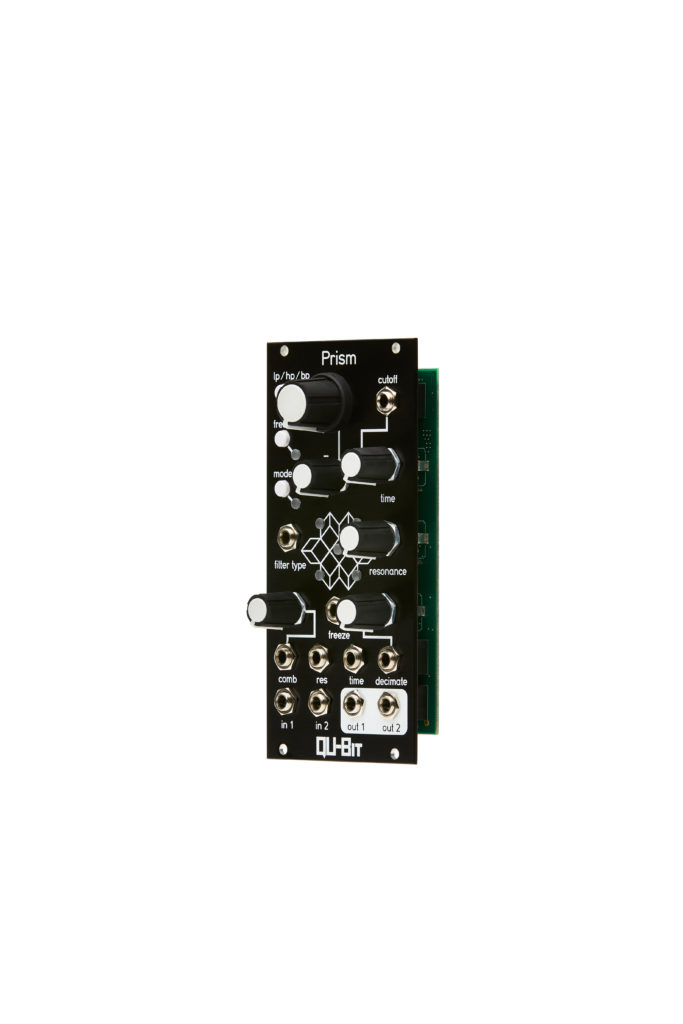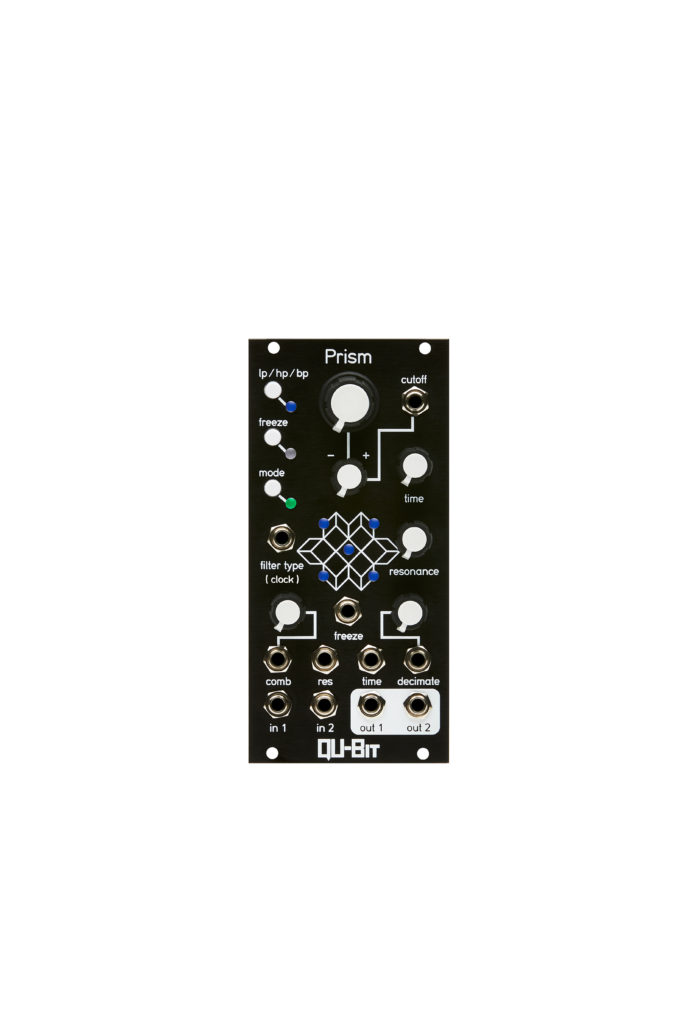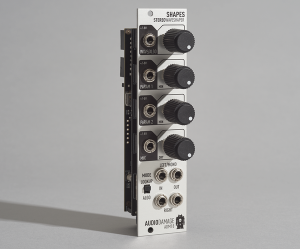Prism is a multidimensional signal processor that creates a framework for the spectral
metamorphosis of any input signal. This stereo audio buffer can be navigated through on 3 axis,
each of which provides a different sonic journey through its array of time based controls.
The X and Z planes are home to a flexible delay line capable of long clocked delays, slapback
echo, or comb filtered vocoder-esque timbres. On the Y axis is the decimate control. This sets
the audio fidelity of the buffer by manipulating the sample rate and bit depth of the output. A
state variable filter with configurable low pass, high pass, and band pass outputs can be enabled
at the beginning or end of the signal chain providing yet another dimension of spectral
transformation. And thanks to its digital architecture, the current buffer contents can be locked
in place with the Freeze control, creating glitch and beat repeat effects which can be synced to
an external clock source. The Prism blurs the lines between DSP effect, filter, and looper and
transcends into a new realm of uncharted audio processing.

- Multidimensional signal processor
- Stereo inputs and outputs
- Flexible delay line providing long delays, and comb filtering
- Bit depth and sample rate manipulation
- State variable filter with LPF, HPF, and BPF
- Freeze control locks buffer in place for glitch and beat repeat effects
- Aluminum front panel

Width: 12HP
Power: +12V: 90mA, -12V: 10mA, +5V: 0mA
Depth: 22mm




